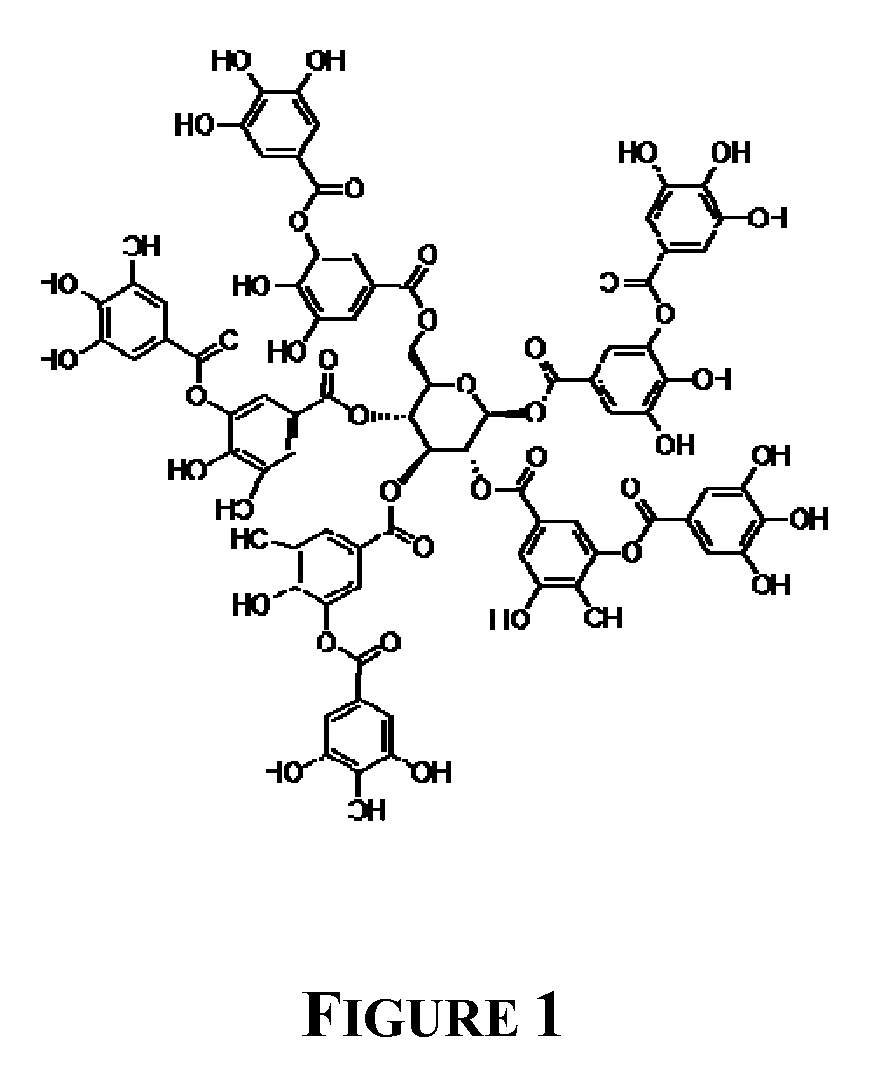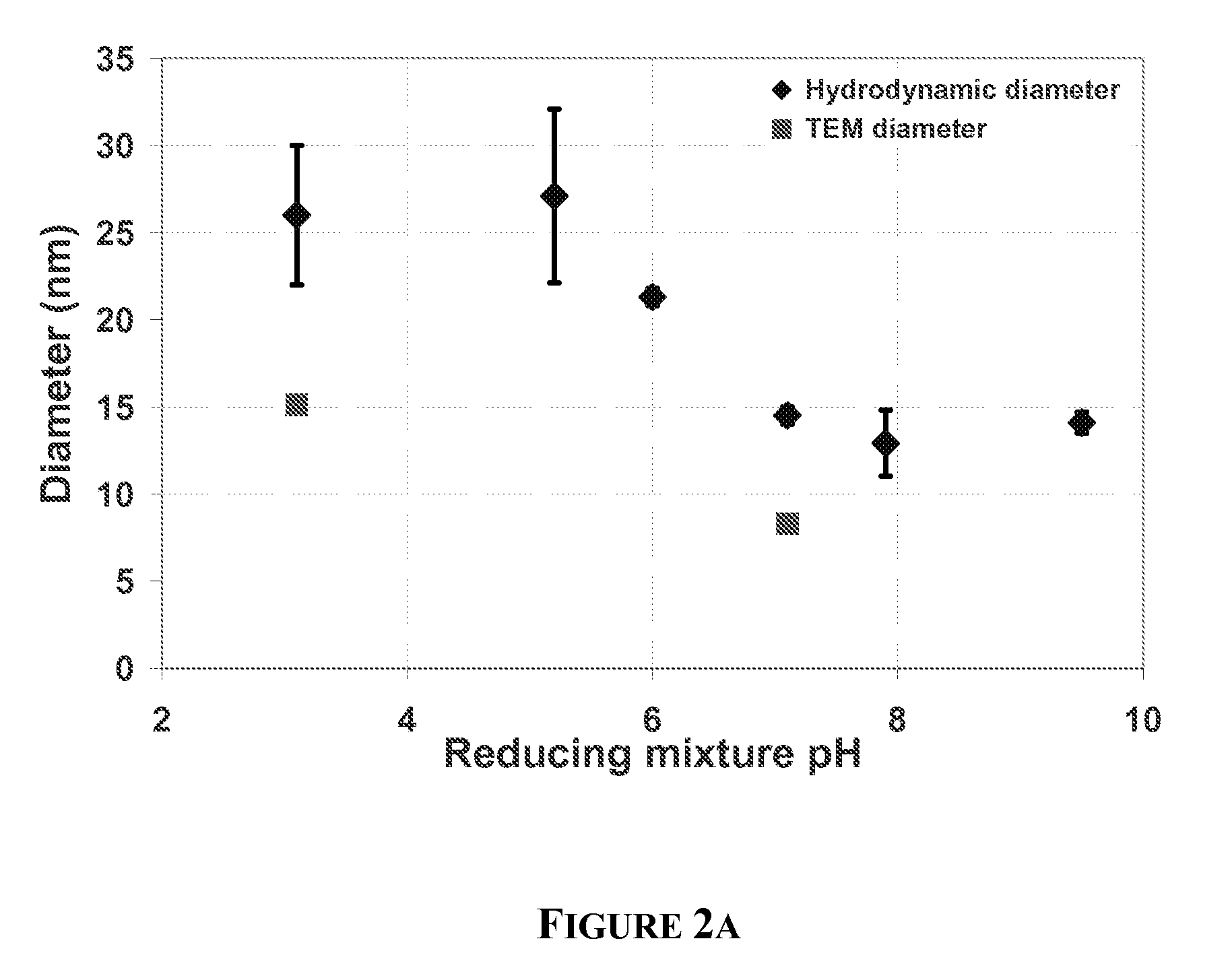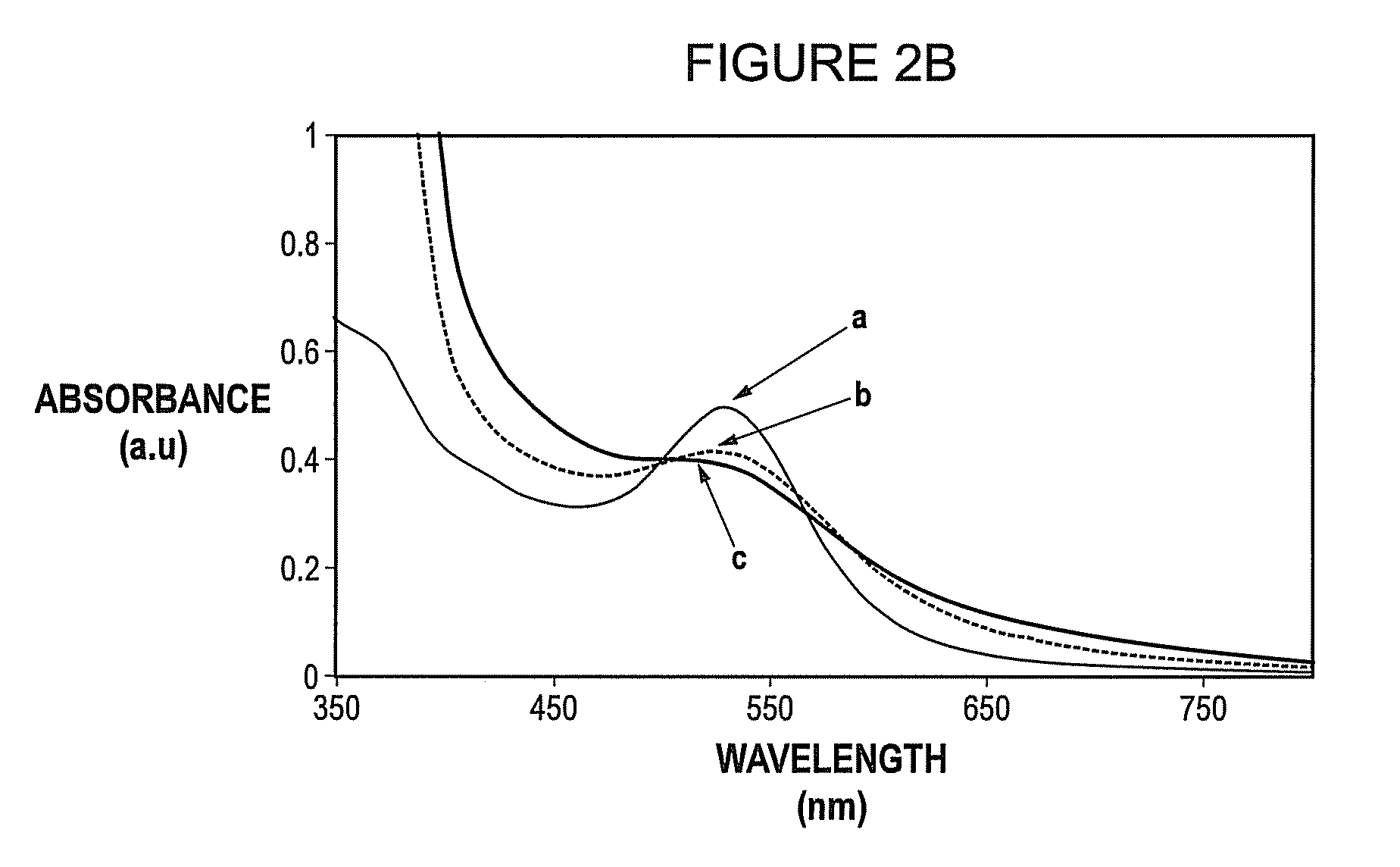Methods for preparing metal and metal oxide nanoparticles
- Summary
- Abstract
- Description
- Claims
- Application Information
AI Technical Summary
Benefits of technology
Problems solved by technology
Method used
Image
Examples
example 1
Preparation of Gold Nanoparticles with Tannic Acid
[0063]Hydrogen tetrachloroaurate (III) hydrate and tannic acid were purchased from Acros Organics (Geel, Belgium). Potassium carbonate and dichloromethane were purchased from Merck. 1-Dodecylmercaptan was purchased from Sigma-Aldrich (Milwaukee, Wis.). D-Glucose, anhydrous was purchased from Himedia (Mumbai, India). 3,4,5-trihydroxybenzoic acid monohydrate (gallic acid), hydrogen peroxide, n-hexane, and hydrochloric acid were purchased from S. D. fine-chem Ltd. (Mumbai, India). Deionized water obtained from MilliQ® (Millipore, Billerica, Mass.) was used in experiments. All chemicals were used as received.
[0064]The experiments were carried out in glassware cleaned with aqua regia (1:3 volumetric ratio of nitric acid to hydrochloric acid), rinsed with tap water followed by deionized (DI) water and then dried prior to use.
pH Studies
[0065]The precursor solutions were prepared as follows: 0.25 mL of 25.4 mM chloroauric acid was made up to...
example 2
Effect of the pH of System for Gold Nanoparticles
[0073]To understand the role of pH in the synthesis of gold nanoparticles by tannic acid reduction, a systematic study was performed by varying the pH of reagents. In all experiments, the molar ratio of tannic acid to chloroauric acid was 2.08.
(a) Effect of Reducing Mixture pH
[0074]A set of experiments was performed by varying the pH of the tannic acid reducing mixture while the pH of chloroauric solution remained at a value of 3.2. The pH of the tannic acid was varied from 3.1 to 9.5 by adding required amount of potassium carbonate. After addition of a pH 3.1 reducing mixture, the combined reaction mixture was colorless for 3 s while at pH≧7 the appearance of color in the reaction mixture was instantaneous.
[0075]As the pH of reducing mixture was increased from 3.1 to 9.5, the hydrodynamic diameter of the nanoparticle decreased from 26 nm to 14 nm. The variation of hydrodynamic size with the pH of reducing mixture is shown in FIG. 2a....
example 3
Role of Reagent Reactivity
[0088]To understand the parameters controlling the nanoparticle size in the synthesis, the mechanisms involved in the nanoparticle formation and the reactivity of the reagents at different pH was analyzed.
[0089]As the reduction of chloroauric acid by tannic acid proceeds the concentration of gold atoms increases and reaches supersaturation. The supersaturated solution can nucleate and the nuclei can grow into nanoparticles. The degree of supersaturation controls the number of nuclei formed. For a given amount of gold precursor, a faster reaction generates a higher supersaturation, producing a greater number of nuclei, and yielding smaller nanoparticles. A slow reaction results in lower degree of supersaturation, giving rise to fewer nuclei, and larger nanoparticles. Alternatively, in the absence of a stabilizer, nuclei and nanoparticles produced may coagulate to yield larger nanoparticles. Thereby, the kinetics of the reaction and the availability of stabil...
PUM
| Property | Measurement | Unit |
|---|---|---|
| Temperature | aaaaa | aaaaa |
| Temperature | aaaaa | aaaaa |
| Temperature | aaaaa | aaaaa |
Abstract
Description
Claims
Application Information
 Login to View More
Login to View More - R&D
- Intellectual Property
- Life Sciences
- Materials
- Tech Scout
- Unparalleled Data Quality
- Higher Quality Content
- 60% Fewer Hallucinations
Browse by: Latest US Patents, China's latest patents, Technical Efficacy Thesaurus, Application Domain, Technology Topic, Popular Technical Reports.
© 2025 PatSnap. All rights reserved.Legal|Privacy policy|Modern Slavery Act Transparency Statement|Sitemap|About US| Contact US: help@patsnap.com



